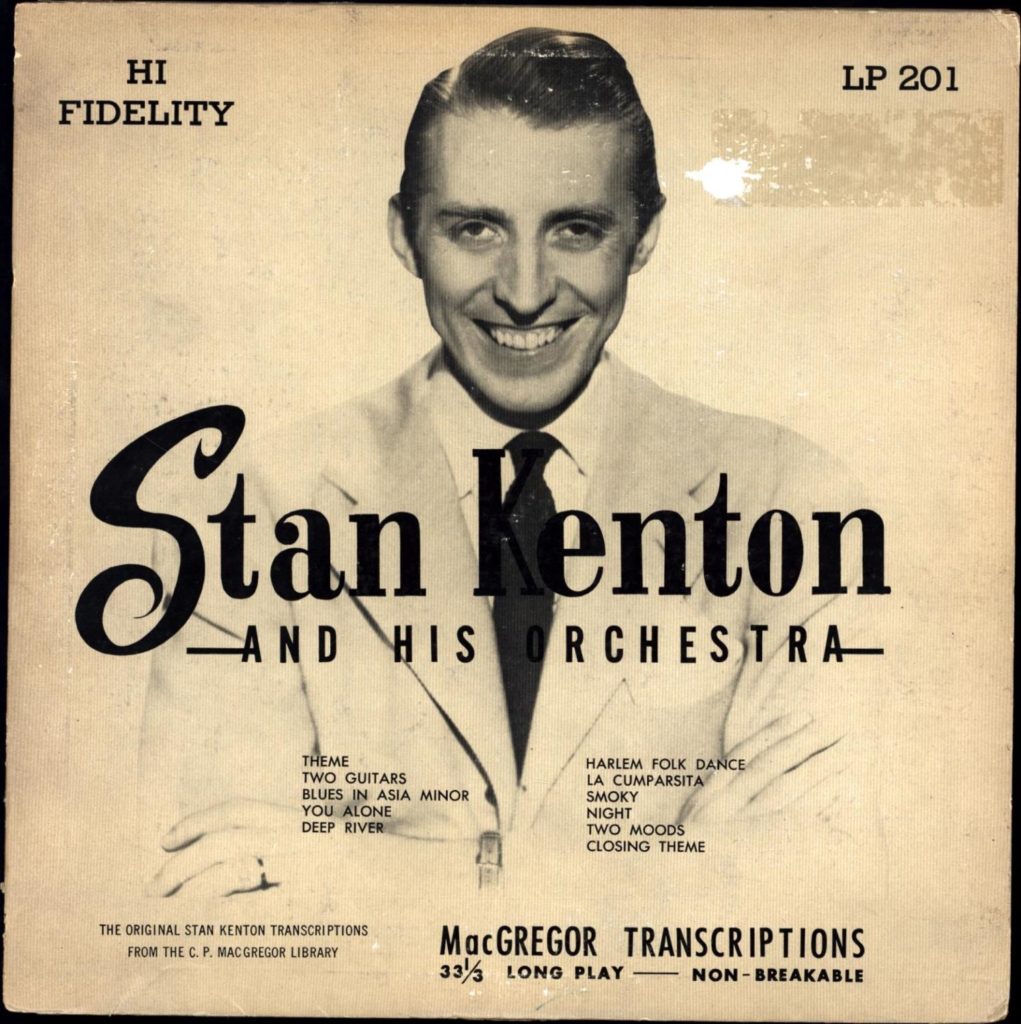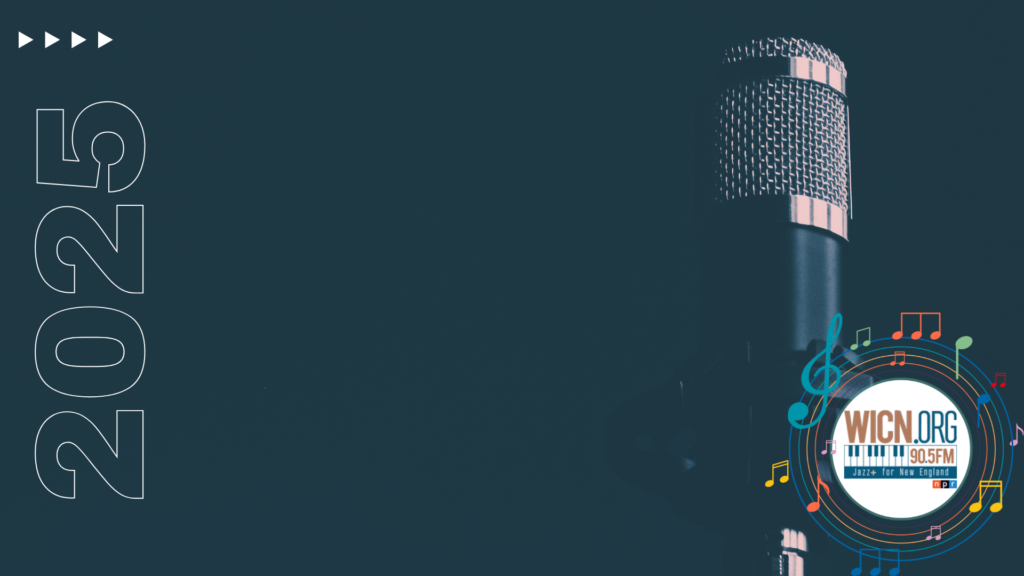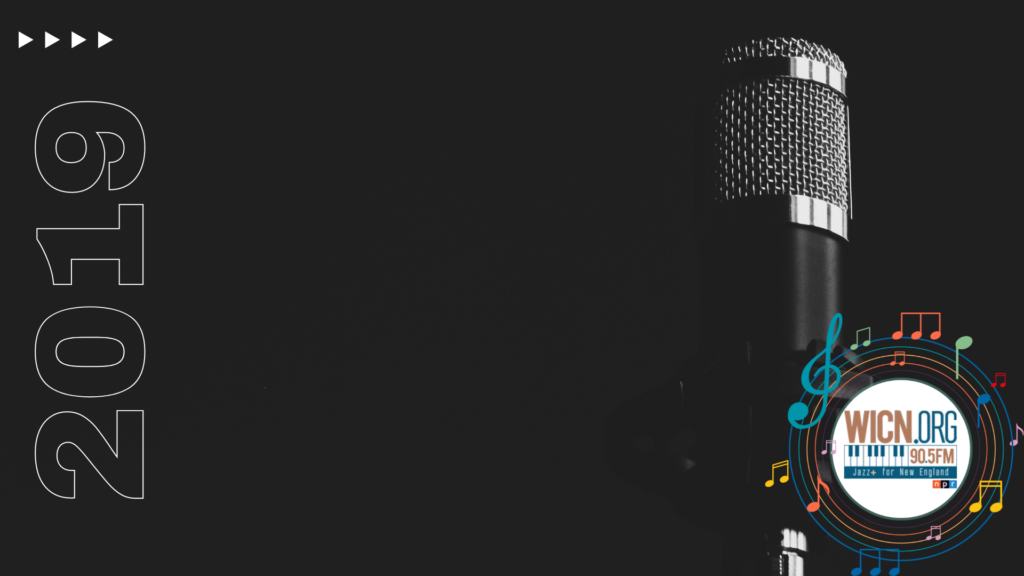Stan Kenton – September Artist of the Month
Written by Emily Morrow on September 3, 2019
ARTIST OF THE MONTH: STAN KENTON (SEPTEMBER 2019)

Stan Kenton’s was the household name in big bands for Baby Boomers. Kenton thrived while other bands faded away, and for a generation of musicians—Jazz players, commercial players, or even just recreational and school band instrumentalists—Kenton’s band was the team that our idols played for. To join his band meant having steady work, strong credentials, and a very good chance of being propelled into wider Jazz exposure. His bold sound captured the modernity of the Fifties: his band set the pace for a big-band jazz of the the age of diesel trains and jumbo jet travel. And in the parlance of the power that heavy metal represented for later generations, Kenton could go to “11.”
Stan Kenton was born December 15, 1911, in Wichita, Kansas. While still in his twenties, he performed as pianist and recorded with the dance band of Gus Arnheim. He was also the pianist in the large group that he launched at the end of 1940, which made its initial impact in Hollywood broadcasting from Balboa Beach, on the coast south of Los Angeles. The area was California’s equivalent to Fort Lauderdale as a spring-break destination for young, dancing people. Kenton auditioned his new group to work the summer season 1941 at the Rendezvous Ballroom, the entertainment jewel in the crown of Balboa’s party zone; he got the job and opened on Memorial Day, 1941.
At the absolute crest of the Swing Era, Kenton launched a band that entertained dancers in beachside ballrooms. Kenton’s home turf was close to the epicenter of the second largest recording economy in America, so much of the early documentation of a Kenton “sound” comes from music recorded for transcription services, to be played as ambient or background sound for commercial use. It might be hard to grasp from the Kenton band’s formative retail recordings on the Decca label what distinguished the group.
Capitol Records was one of the most durable labels, out of thousands of labels born in the Forties. The recordings at the root of Kenton’s legacy were made for Capitol in 1943, and it would remain the platform for Kenton’s whole career through the 1960s. Early hits showcased the vocalists Anita O’Day and June Christy, and arrangements by Pete Rugolo. Rugolo joined as staff arranger in 1945, and his willingness to experiment propelled the band toward a hybrid existence in which they strived for a concert music that we would watch sitting down—”Concerts of Progressive Jazz”—while they also continued to fulfill bookings as a dance band.
At midcentury, Kenton undertook a reorganization of his band, to outfit it with a still larger brass section (including tuba and French horns) and a string section. Altogether this new Innovations in Modern Music orchestra numbered 39 musicians. Such was the popularity of Stan Kenton that we would follow him into almost any new direction—even choosing music that didn’t swing overtly. And, for that matter, into the icy forbidding environs of a third-stream fusion with classical music a (recalling the pomp and amplitude of Wagner and Hindemith) in Bob Graettinger’s City of Glass.
Kenton has a charmed and enigmatic place in the spectrum of jazz consumption: on the one hand, his brash, full-throated big band created a lasting model by which contemporary bands measure themselves. On the other hand, his success seems to stand apart from the big-band field in every way: Kenton fans are not necessarily fans of Basie, Ellington, or other groups, and the converse is also true. Stan Kenton’s band came from California and encompassed many of the elements (and players) we associate with so-called “cool Jazz” and also with the different but overlapping “West Coast Jazz” sound. Yet Kenton’s screaming, maximalist aesthetic comes off as the opposite of “cool.” The Kenton sound has the programmatic richness of Hollywood soundtracks, though there’s really only a tiny overlap between Kenton’s activity and the film and television studios. He also gained fans and leverage in inverse proportion to the general popularity of Jazz: in the post-Swing Era world of the 1950s, his big band should logically have been kicked to the curb by the James Dean–Jack Kerouac continuum that prized rebellion and raw edge. Yet Kenton soared. Go figure…
Meanwhile, the Kenton band is responsible for bringing to our attention a huge number of leading figures in midcentury Jazz. Here’s a short list: Stan Getz, O’Day, Christy, Lee Konitz, Rugolo, Shorty Rogers, Shelly Manne, Frank Rosolino, Art Pepper, Zoot Sims, Bill Perkins, Bill Holman, Bill Russo, Carl Fontana, Bud Shank, Conte Candoli, Gerry Mulligan, Richie Kamuca, Sam Donohue, Maynard Ferguson, Stan Levey, Vido Musso, Jack Sheldon, Kai Winding, Chris Connor, and Mel Lewis.
Proving the point even better is a flock of players who may not themselves have become bandleaders or figures recognizable to the general populace but who, via the Kenton imprimatur, recorded as leaders: Lennie Niehaus, John Graas, Manny Albam, Eddie Safranski, Howard Rumsey, Marvin Stamm, Claude Williamson, Bob Cooper, Gene Roland, Sam Noto, Jack Nimitz, Milt Bernhart, Eddie Bert, Chico Alvarez, Don Bagley, Sal Salvador… as well as Worcester natives, saxophonist Boots Mussulli and trumpeter Don Fagerquist. The lists run much longer, to include many still-active musicians whose résumé starts with Kenton’s last bands in the 1970s.
The biggest news of Kenton’s last decade was his effort to own the means of production with his Creative World record label. After more than a quarter century, he was free of the Capitol Records contract. Creative World undertook the newest projects as Kenton dipped a toe into fusion, re-released his earlier albums, and also carried on the tradition of the leader sponsoring some of his key arrangers and sidemen in their own leader dates.
Stan rolled on. His concert schedule was thick all the way until the end. Kenton’s latter-day legacy was propelled into contemporary times by a heavy presence on the college circuit, where he gave clinics and demonstrations that galvanized thousands of teenage band musicians into appreciating the power and polish possible in a Jazz big band.

